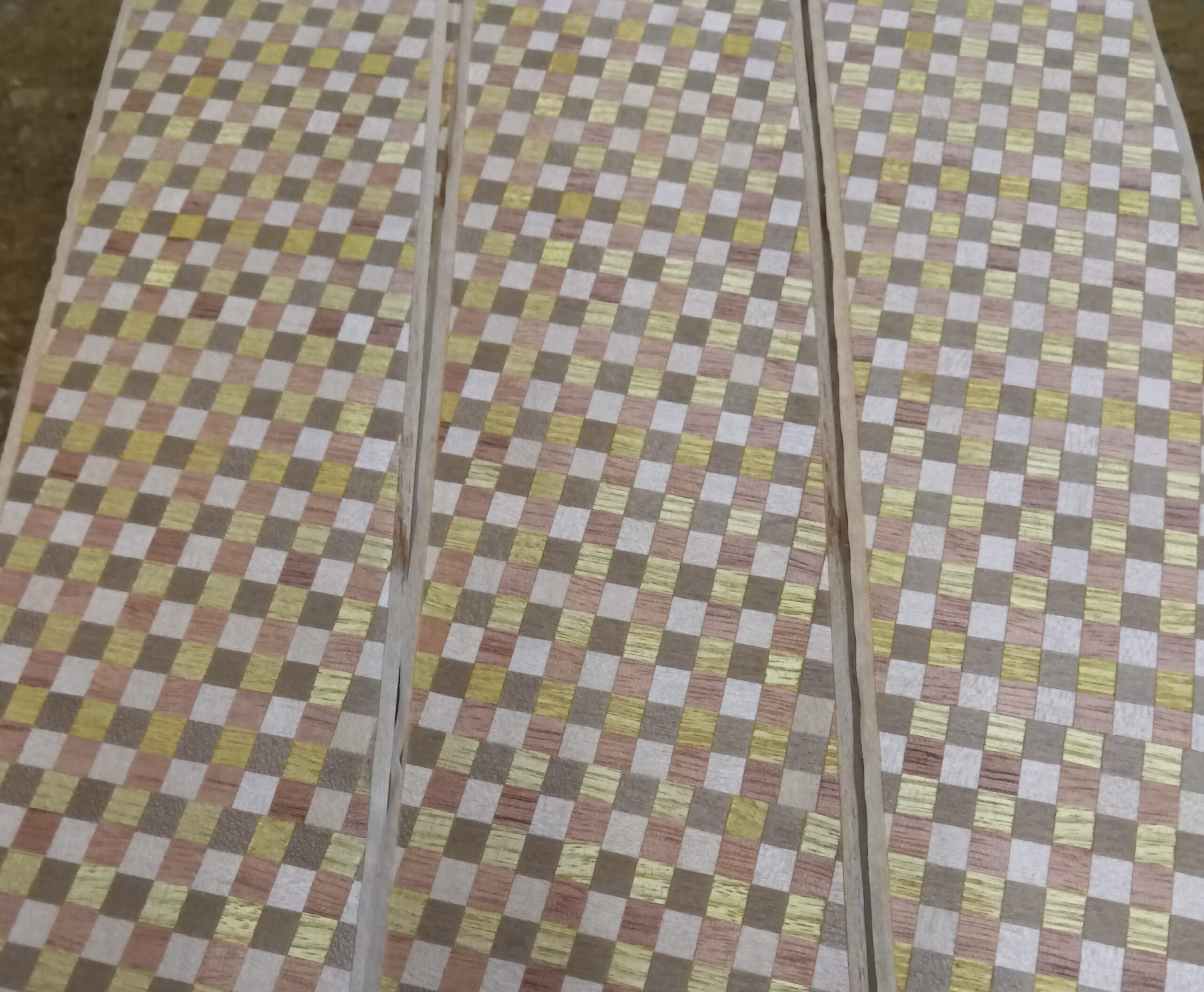Sep 23, 2025
Today is a national holiday in Japan, Autumn Equinox Day, so it’s a day off. As the name suggests, the weather has turned quite cool. In the morning it was only around 17°C, which felt a little chilly.
This week in Japan, until the 26th, is the period called “Higan”. Based on Buddhist belief, Higan comes in both spring and autumn, and it is thought to be the time when this world and the afterlife come closest together. It is a time to honor our ancestors. At supermarkets, you can see flowers and traditional sweets sold as offerings for Higan.
There is an old Japanese saying, “Heat and cold last until Higan,” meaning that this period marks the change of seasons. Just as the saying goes, the days have already become much cooler.
This afternoon I went to my workshop and did a little work. I continued from yesterday, attaching the sliding key (kannuki) panels to the 4-sun 18-steps puzzle boxes. I also attached the Yosegi panels for the 4-sun 10-steps drawer puzzle boxes, which will be my work after the next project.
In the end, I decided to use the same four-color checkerboard pattern (ichimatsu) for both the upcoming 27-steps puzzle boxes and the 10-steps drawer puzzle boxes that will follow. I chose this so the production process can go more smoothly, since they are both 4-sun size.
As for the two-color checkerboard pattern, I’m thinking of keeping it for when I make “the knock boxes” again.
I have been making this four-color checkerboard pattern for quite a long time, and for now I have settled on these four colors. In the past, I tried many different woods and colors, but in the end I chose these four kinds of wood because they can be sliced stably. The four are Hoo, Mizuki, Nyatoh, and Urushi wood.
Among these, only the urushi wood has a slightly different grain. The other three are fine-grained and almost without visible patterns, but the urushi wood has a rougher grain with many streaks. Because of this, it tends to form small holes when sliced. However, since urushi wood has a light yellow, almost lemon-yellow color, the thinness or small holes are not so noticeable to the eye. That is an advantage, even though ideally it’s not a good thing. To slice it completely without any see-through parts, I would have to cut it thicker, but then the other woods would also need to be sliced thicker, which is not possible.
So while rough-grained woods are harder to slice, urushi wood is light and soft, which makes it manageable. For example, if I used zelkova, the grain is rough but the wood is heavy and hard, so slicing it cleanly would be much more difficult.
From tomorrow, the weekdays begin again, and I plan to continue working on these processes.


